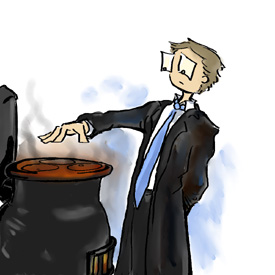Hot Stove Rule: Employee Discipline
The "Hot-Stove Rule" of Douglas McGregor gives a good illustration of how to impose disciplinary action without generating resentment. This rule draws an analogy between touching a hot stove, and undergoing discipline. When you touch a hot stove, your discipline is immediate, with warning, consistent, and impersonal.
These four characteristics, according to McGregor, as applied to discipline are self-serving and may be explained as follows:
- When you touch the hot stove, you burn your hand. The burn was immediate. Will you blame the hot stove for burning your hand? Immediately, you understand the cause and effect of the offense. The discipline was directed against the act not against anybody else. You get angry with yourself, but you know it was your fault. You get angry with the hot stove too, but not for long as you know it was not its fault. You learn your lesson quickly.
- You had warning as you knew the stove was red hot and you knew what would happen to you if you touched it. You knew the rules and regulations previously issued to you by the company prescribing the penalty for violation of any particular rule so you cannot claim you were not given a previous warning.
- The discipline was consistent. Every time you touch the hot stove you get burned. Consistency in the administration of disciplinary action is essential. Excessive leniency as well as too much harshness creates not only dissatisfaction but also resentment.
- The discipline was impersonal. Whoever touches the hot stove gets burned, no matter who he is. Furthermore, he gets burned not because of who he is, but because he touched the hot stove. The discipline is directed against the act, not against the person. After disciplinary action has been applied, the supervisor should take the normal attitude toward the employee.
